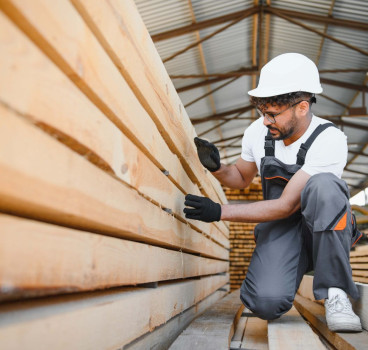3D or not to be - the future for construction is digital
The construction industry has been experimenting with 3D printers since they were first invented in the 1980's but in recent years as they have become less expensive, this technology is showing that it might well make a real contribution to buildings of the future.
The technology can already be used to create construction components or to 'print' entire buildings and because of our detailed and stringent design processes our industry is well-suited to 3D printing as much of the information necessary to create components already exists. More recently, with the introduction of BIM modelling, we may well see this process being accelerated.
A 3D digital model of a product or component can be created using CAD or a 3D scanner. The printer then reads that design and lays down successive layers of printing medium which are joined or fused to create the end component.
There are many examples of successful 3D projects allied to construction. In 2014, engineers at Arup fabricated a sreel node for a lightweight structure and the University of California has developed a process of contour crafting using concrete to produce small-scale models of the external and internal wallos.
According to sources from the BBC, Shanghai based WinSun Decoration Design Engineering has used large 3D printers to spray a mixture of quick drying cement and recycled raw materials which has enabled them to construct 10 small demonstration 'houses' in less than 24 hours. They are encouraged by the fact that each house costs just $5,000 dollar a time using this technology.
Construction Manager Magazine reported in July 2014 that a Chinese company, Qingdao Unique Products had unveiled the World's largest 3D printer. Its first job was to print a 7m high Temple of Heaven.
In Spain, the first pedestrian bridge printed in 3D in the world was inaugurated 14th of December of 2016 in the urban park of Castilla-La Mancha in Alcobendas, Madrid. The bridge has a total length of 12 metres and a width of 1.75 metres and is printed in micro- reinforced concrete.
What all of these projects have in common is the potential for enormous cost savings with faster building times and fewer hours on site being an enormous attraction for an industry obsessed by price and it's almost certain that 3D will carve out an enormous niche for itself in the market place.
On the negative side, it will require enormous investment in specialist machinery and while we can still see a growing trend towards off site production, which is well suited to 3D this writer believes we still have a long way to go.
So for the moment, traditional building materials are not under threat – or are they?
By John Ridgeway
Follow me on Twitter @JohnRidgeway99
Additional Blogs

What if Building Control went fully digital?
Building control governs structural integrity, fire protection, energy efficiency, accessibility and countless other aspects of design and construction. Historically, this process has been highly...
Read moreWhere most “Smart Buildings” go wrong
Smart buildings are often presented as the ultimate in modern construction - interconnected, efficient, intuitive and driven by real-time data. They promise lower operating costs, reduced energy use,...
Read more

The future of facilities management starts at RIBA Stage 0
Facilities management has traditionally been treated as a discipline that only becomes relevant once a building is handed over. At that point, FM professionals inherit decisions made months or years...
Read more